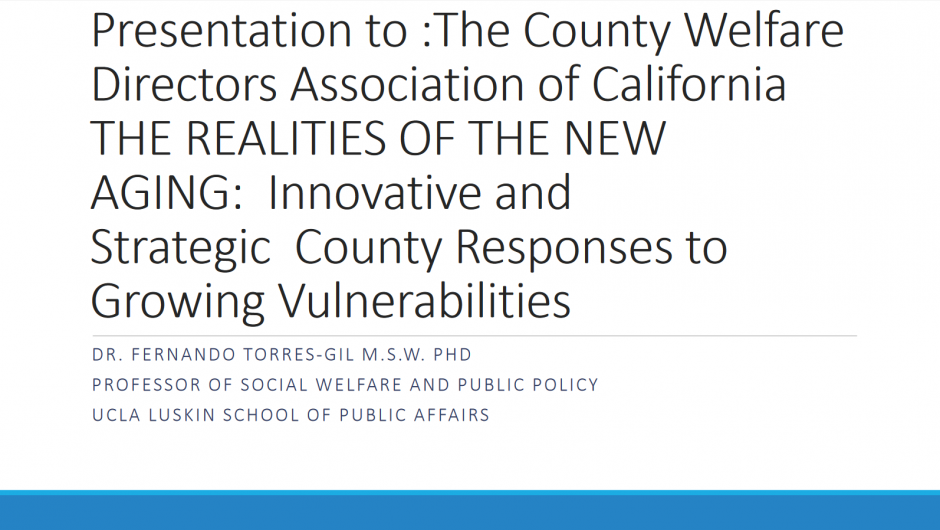The Realities of the New Aging
The opportunities of increased life spans is juxtaposed with the realities of social and economic disparities. Never before have we had the opportunities for living longer, yet we may face with the aging of baby boomers the new realities of vulnerabilities in old age. A recent UCLA report gives a more complex understanding of the realities facing the next cohort of older persons across the nation and in California. By utilizing a more realistic “Elder Index Poverty Measure,” UCLA research demonstrate that the official poverty index underestimates the actual levels of economic insecurity and poverty level among older Californians. To the extent that this report’s estimation of growing numbers of “unofficially” poor elders is accurate, California will face major challenges in addressing the social, economic, health and long-term care needs of the new generation of older Californians. This presentation used the UCLA report to provide a context by which county government can assess their strategic and operational responses to the aging of their local populations; assess how county resources can assist older persons, their families and caregivers; and how county public officials might draw on the electoral influence and moral authority of senior citizens in their midst. Issues of diversity, the politics of aging, age-friendly locales and multi-generational approaches are incorporated in this policy analysis as well as the larger dimensions of federal and national policy trends that will impact directly how state and local governments (county and municipal) plan for and respond to the demographic realities of the new aging.
The Realities of the New Aging: Innovative and Strategic County Responses to Growing Vulnerabilities
- Fernando Torres-Gil, Center for Policy Research on Aging, UCLA

